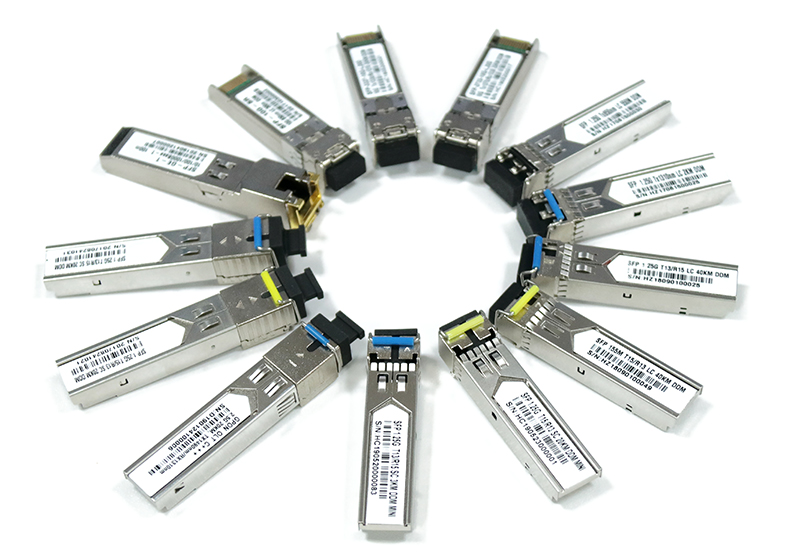Can SFP optical modules be used in SFP+ slots?
SFP optical modules can be inserted into SFP+ ports in most cases.
Although the specific switch model is uncertain, according to experience, SFP optical modules can operate in SFP+ slots, but SFP+ optical modules cannot operate in SFP slots. When you insert an SFP module in the SFP+ port, the speed of this port is 1G, not 10G. Sometimes this port will lock at 1G until you reload the switch or do some commands. In addition, SFP+ ports usually cannot support speeds below 1G. In other words, we cannot insert a 100BASE SFP optical module into the SFP+ port.
In fact, for this problem, it depends largely on the switch model, sometimes SFP is supported on the SFP+ port, sometimes not.
SFP+ is not automatically compatible with 1G to support SFP optical modules.
Unlike copper SFPs available in 10/100/1000 auto-compatibility, optical fibers such as SFP and SFP+ do not support auto-compatibility. In fact, most SFP and SFP+ will only operate at rated speed.
Although in many cases we can use SFP optical modules in the SFP+ port, but this does not mean that SFP+ can support 1G when inserted into the SFP+ port. In the optical fiber link, if we insert an SFP optical module on the SFP+ port (1G) on one side, and then insert an SFP+ optical module on the SFP+ port on the other side (10G), it may not work properly! For this problem, if you use SFP+ high-speed cable, it will not be compatible with 1G.
When using SFP and SFP+ optical modules in the network, ensure that the speeds of both ends of the fiber link are the same. 10G SFP optical modules can be used in SFP+ ports, but SFP cannot be connected to SFP+ optical modules. For different speeds, transmission distances and wavelengths, 10G SFP+ optical modules can only be used for 10G SFP+ ports, and will never be automatically compatible with 1G.
